The AC Milan legend, Gennaro Gattuso replaced Carlo Ancelotti as the manager of Napoli in December. He had a pretty difficult time in the early months, lost four and only won once in the first five Serie A games. Despite all the criticisms, Gattuso did not change his philosophy totally, gradually improving Napoli’s ability to play out from the back under pressure. Watch out for their full-backs, as they have been key to the build-ups.
The changes were hinted at by the statistics. We compared some statistics between the two Napoli managers this season. The average passes per possession increased from 4.82 to 5.93 in Gattuso’s era, showing that while the team style under Ancelotti varied based on the situation, the new manager has had a strong belief in playing out from the back. The long passes percentage dropped from 8.39% to 7.17%.
This tactical analysis is a scout report and we will show you the build-up tactics and tactical concepts of Gattuso at Napoli.
The midfielders
Gattuso played his team in a 4-3-3 formation in all matches, and, after reinforcements in the winter transfer window, he had more options in the midfield. In our previous analysis, we explained the roles and choices of his midfielders.
If possible, almost all teams would like to keep the ball in the middle, since this has many benefits, including a wider view of the field. Therefore, the defensive midfielder is heavily involved in the build-up, especially when Fábian Ruiz has played this role. The Spaniard is technically gifted enough to play different types of passes, and he is an ideal option for progressing the ball.
However, Ruiz’s defensive vulnerability has been a weakness in Napoli’s midfield. As a result, Diego Demme and Stanislav Lobotka were introduced in his position and Ruiz was pushed further forward after January. Every coin has two sides, though, and through this move, Napoli sacrificed the offensive ability they previously had from the deep-lying midfielder. Neither Demme nor Lobotka have Ruiz’s ball-playing ability, and so, Napoli had to look for a different solution, which we will explain further.
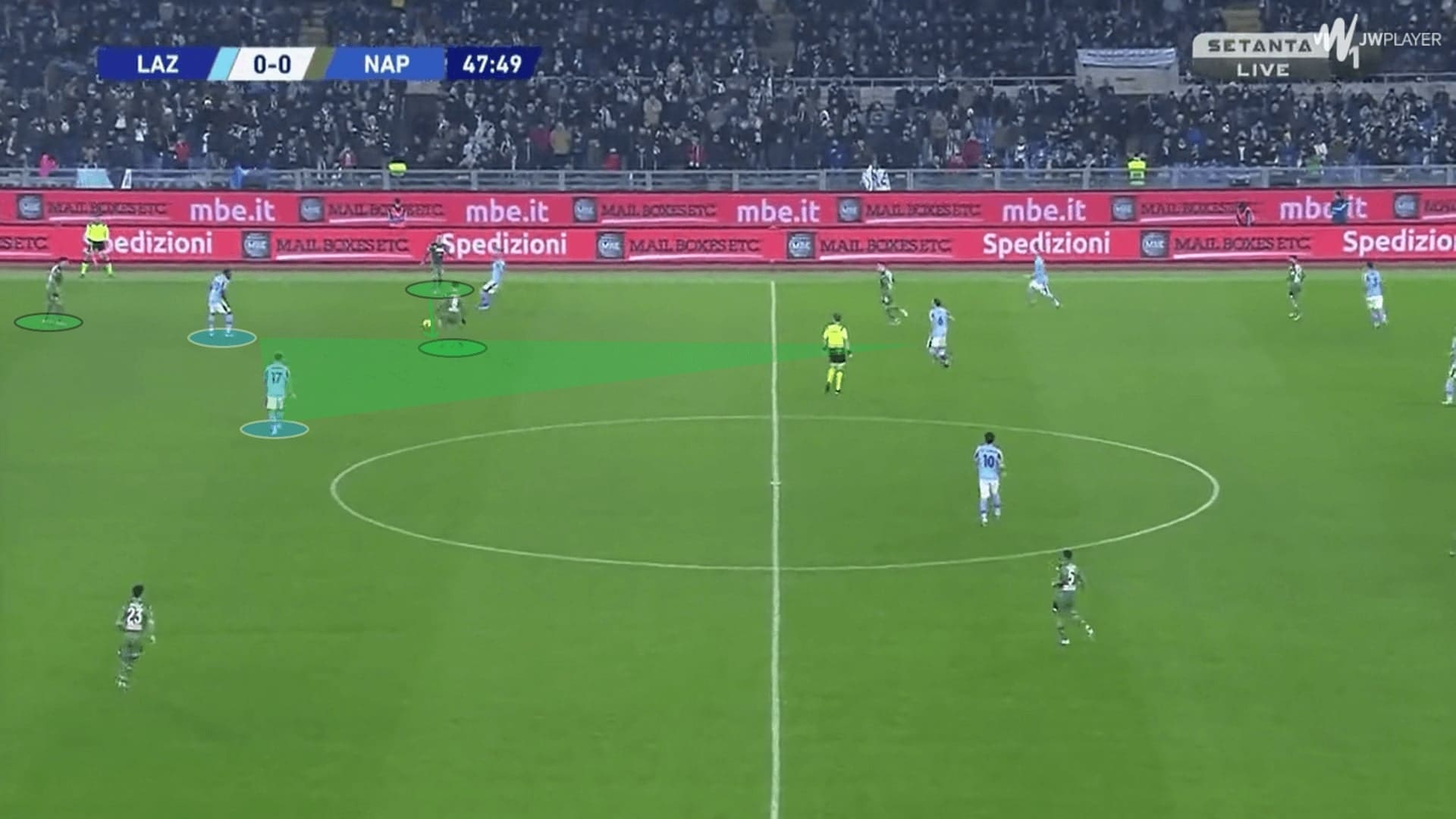
Many opposition teams would man-mark the defensive midfielder when pressing. If the pivot was not Ruiz, Napoli would drop another midfielder alongside as an extra man in the build-up. Most of their opponents have played a midfield trio which perfectly man-marked the Napoli midfielders. When the dropping midfielder came deep, sometimes the marker was reluctant to follow closely as he had to protect his midfield zone. This allowed the dropping player receiving the ball in the centre, as a free option to progress the attack.
The following scenario illustrates this. Ruiz was unavailable due to Marcelo Brozović’s marking. The issue was solved as Piotr Zieliński dropped deep to provide an option, into an area where Matías Vecino was unwilling to follow him.
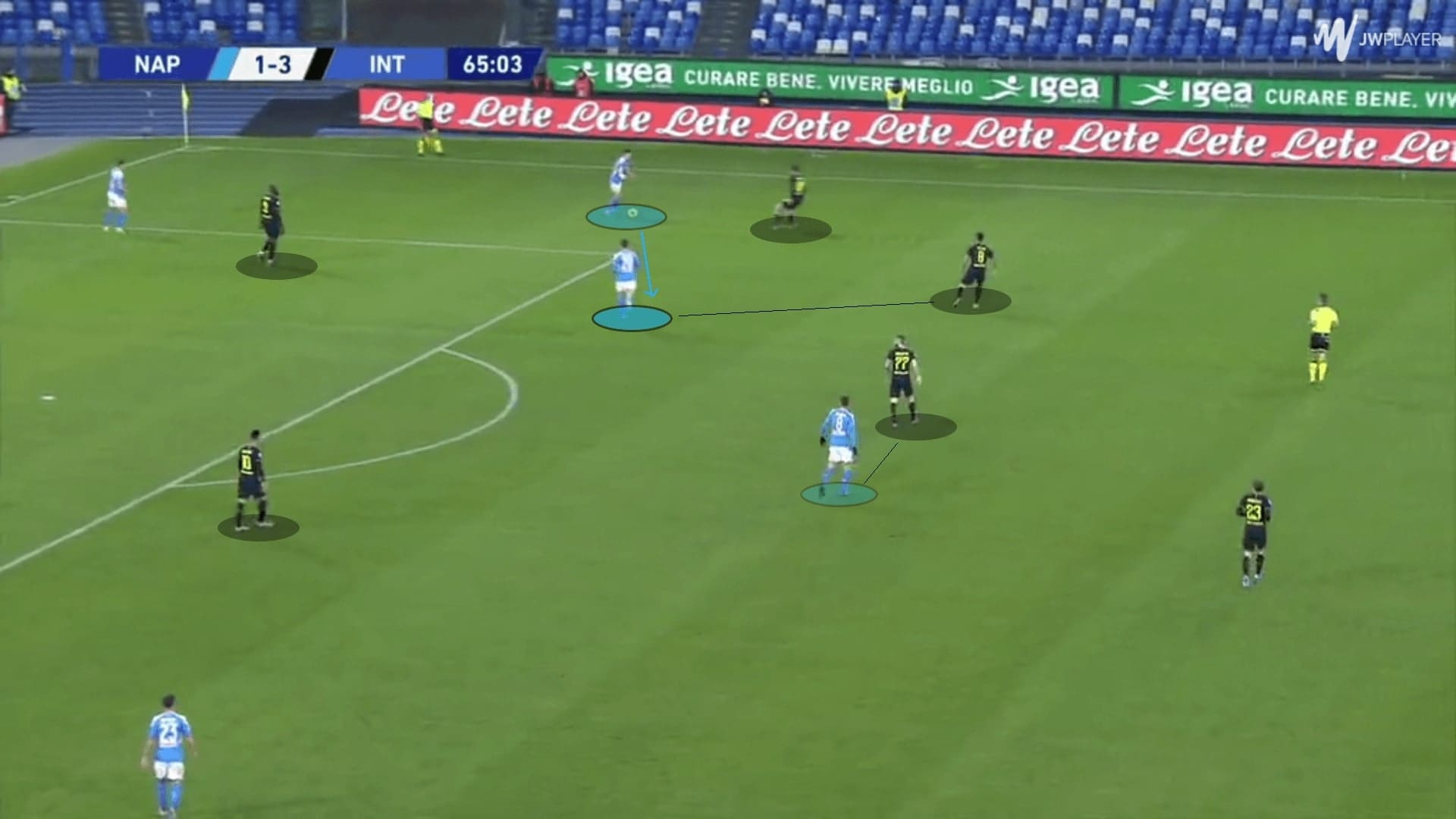
Role of the goalkeeper
Napoli were not able to progress the ball centrally on every occasion. When the options were not available initially, the ball was returned to the keeper in the hopes of opening up a passing lane. Unless the pressure was very close, the keeper had the duty to find the free player in the centre, or, move the ball wide.
Though David Ospina and Alex Meret were not equipped with the goal-kicking ability to play long, they were still a part of build-up when the ball was returned to their feet.
It was expected the return pass to keeper would draw the pressure higher, in other words, freeing up the midfielders. In those cases, the keeper should try to find the defensive midfielder. As in the below case, the return ball from Konstantinos Manolas triggered the press of the Lazio players, who both left Ruiz and approached the keeper. Ospina was then able to pick out Ruiz with a pass between the players.
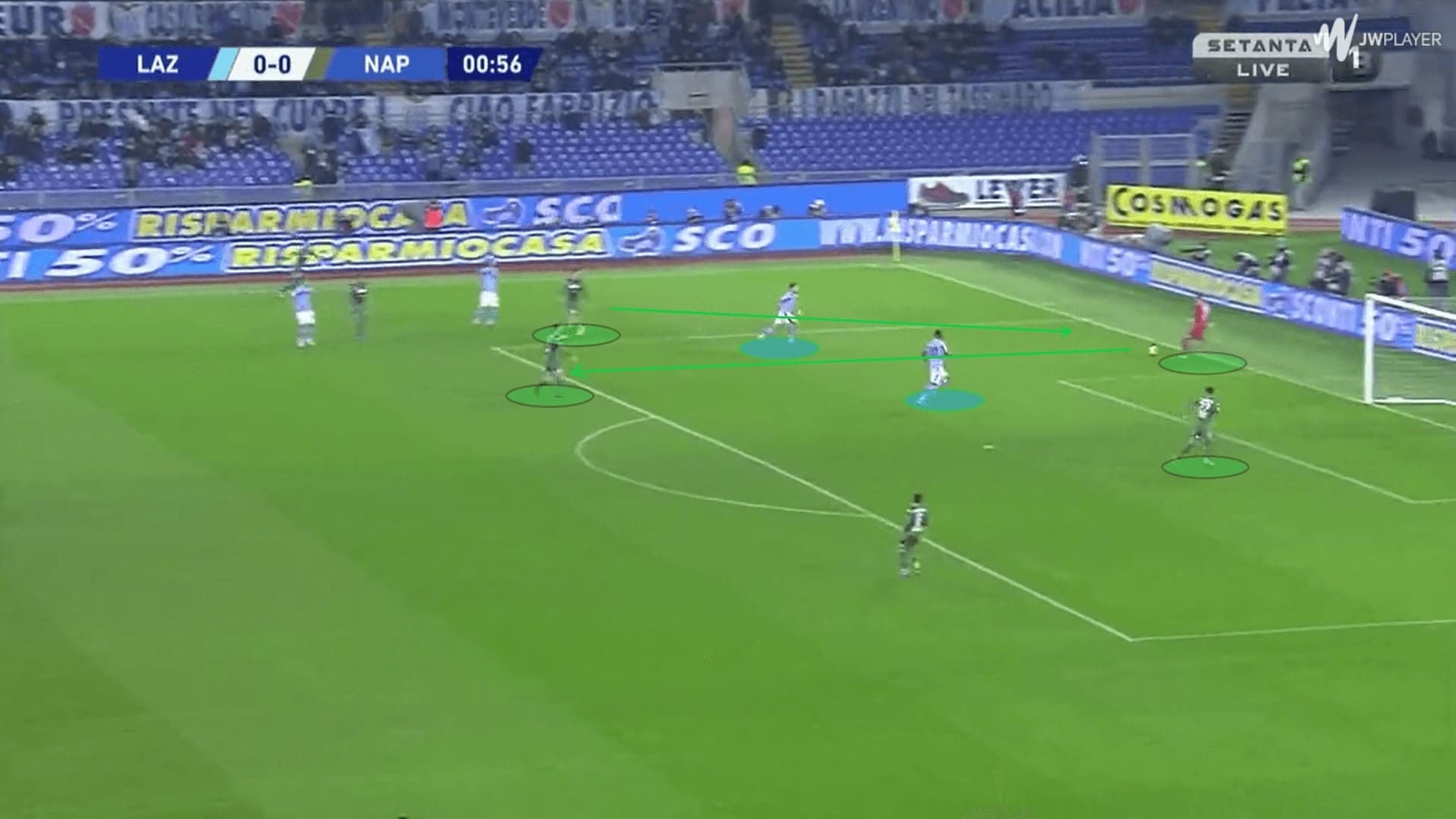
There was another possibility: the return pass did not invite pressure onto the keeper and the midfielders were not free. Then, the ball would be moved to either full-back. You could see the situation as a switch of play by Napoli, involving the keeper. This could be either done by a lofted ball or by reaching the other centre-back first. Napoli were strong at progressing the ball to the flanks, which we are about to analyse.
This alternative case is demonstrated by this example. The pass to the keeper did not trigger Barcelona’s press, hence, Demme remained unavailable because of Ivan Rakitić’s marking. Therefore, Ospina played the ball to Nikola Maksimović first in the hope of inviting Arturo Vidal’s press, this allowed Mário Rui to receive the ball behind the Chilean and with more space.
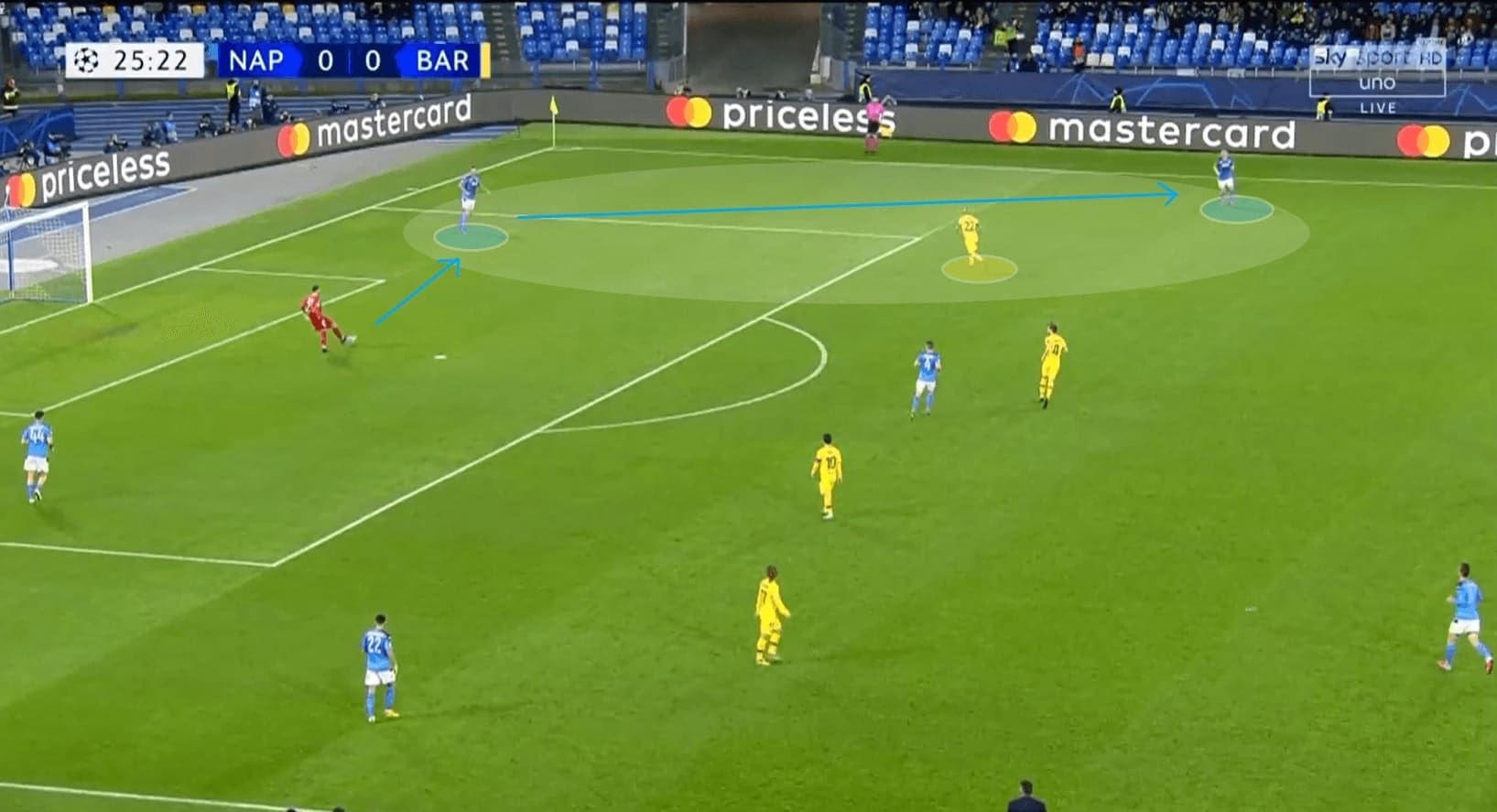
The support
In this section of the analysis, we explain how the players provide support to the player in possession, when the pass was made to a full-back. In general, Napoli relied on a passing triangle to generate options. In front of the full-back, he would usually have two options, a winger, staying wide and the advanced midfielder on the ball side.
This was liked a “V-shape” as both players would position themselves diagonally to the full-back. We drew the lines in the below image, where Lorenzo Insigne and Zieliński supported Rui. Always, the supporting players should position themselves behind the opposition players, as it would then allow Napoli to break the lines and get through the opposition’s press. After this pass was made, for example, there was the potential for a third man play from Insigne to Zieliński.
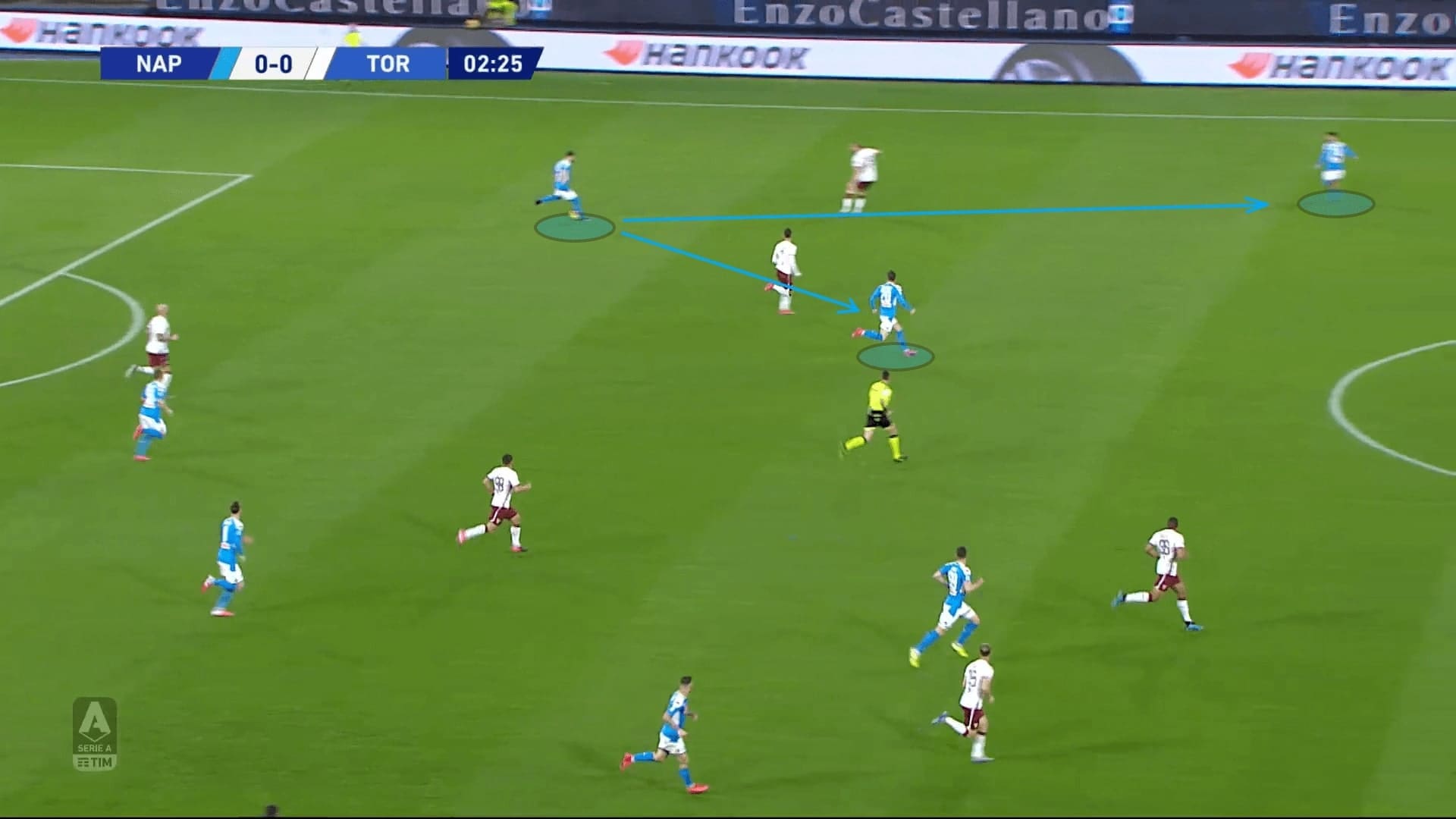
For the advanced midfielders, their supporting movement would depend on the positioning of their markers. Their presence is important as neither Demme nor Lobotka are proficient in terms of their passing range, and thus cannot be expected to find the advanced players with an out-ball. A wide overload is thus commonly seen and we will explain it later.
If the marker shuts the passing lane to the advanced midfielder initially, he usually came from a higher position. To make himself available, the midfielder should run diagonally to provide a vertical passing option for the full-back. This is the situation in the left part of the image below. The full-back would play a lofted pass or a chipped ball if a ground pass is not available.
If the marker was behind the advanced midfielder initially, it means he was coming from a deeper position. It was not ideal to make the same run as in the above case, as the full-back was confronting direct pressure and it would be hard to get the timing right. Therefore, the advanced midfielder could drop deeper centrally, where the angle was also comfortable for the full-back. This is the situation on the right; this could potentially lead to a switch of play, helping the team to escape the pressure on that side.
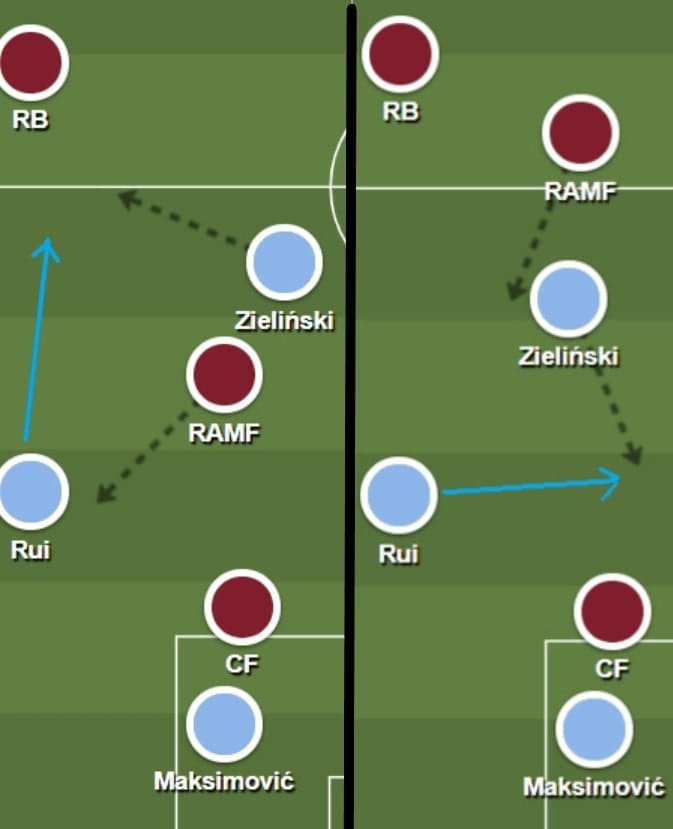
If the situation is one in which the midfielders are not available, there is still the option for the player himself to carry the ball forward. Comparing the personnel on both flanks, Rui has a better pressure- resistance while carrying the ball than Elseid Hysaj or Di Lorenzo. This is an effective weapon as usually, the defending players are not expecting progressive runs from the full-backs.
As an example, Rui dribbled past four Barcelona players in the below image, and he was not caught by any of them. He even drew Sergio Busquets out of position, and eventually produced an out-ball which allowed Napoli to escape from the press.
Rui’s ability to carry the ball forward is supported by the statistics. He has provided 3.00 progressive runs per game under Gattuso, more than Di Lorenzo’s 1.50 and Hysaj’s 2.50.
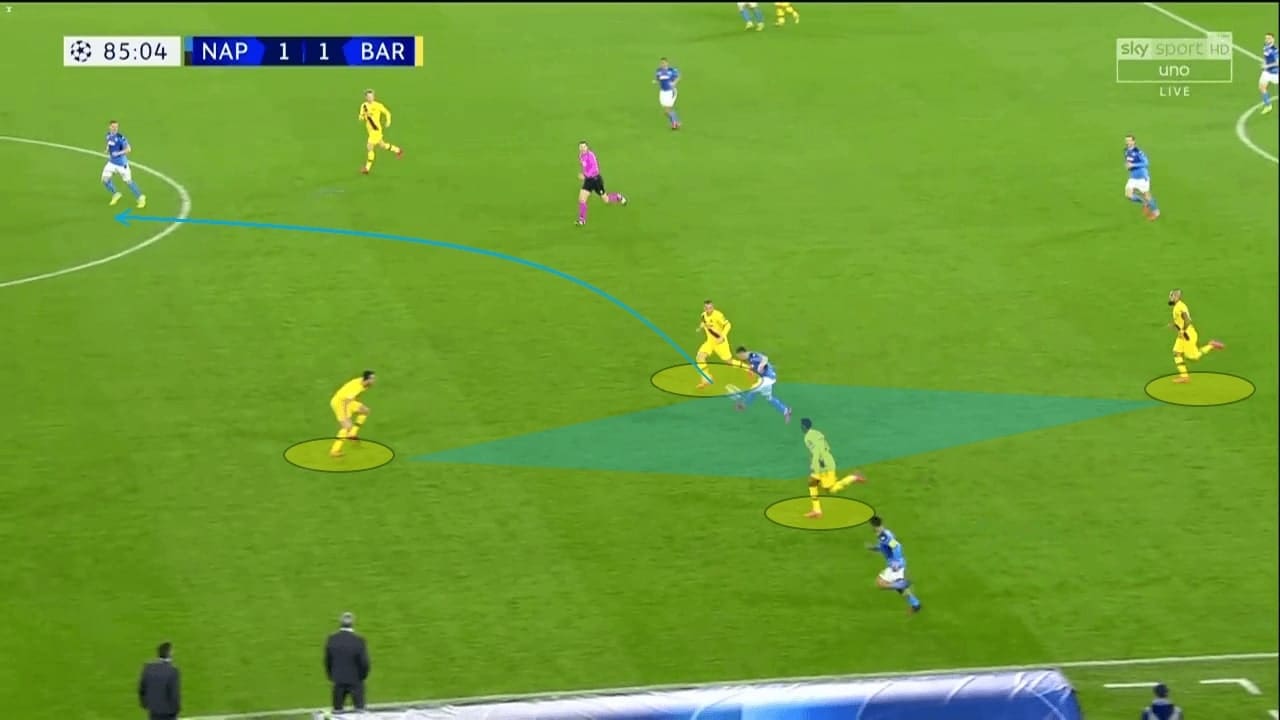
Wide overload
Finally, we are explaining the wide overload which Napoli often create under Gattuso, depending on the situation and the opposition’s shape. Their opponents have usually looked to shut off passing lanes and space in central areas. For example, Juventus pressed in a 4-3-1-2 and it was a 3-4-1-2 from Inter. Their defensive shapes were upward-pointing triangles (the 1-2) because of the 1-2-1 shape of Napoli at the backline. On most occasions, Gattuso’s centre-backs and the defensive midfielders were man-marked, and thus passing to the full-backs was always a good option.
However, as explained, the movement of Napoli’s advanced midfielders depended on their markers. If the opposing wide midfielders moved onto the Napoli full-back, then, it was 2 v 1 situation as explained above. The opposing full-backs were to be pinned by a winger, and that is how José Callejón, Ruiz and Hysaj created a 3 v 2 against Alex Sandro and Blaise Matuidi below.
As a result, the opposition defensive midfielder became vital as he was the only one to balance the numbers. However, the coverage and accessibility of Miralem Pjanić was not enough for large areas. He would also need to be aware of Arkadiusz Milik, who would drop into that space if the Bosnian left his position. This put the sole pivot in a dilemma – he had to decide to protect the central zone or to balance the flanks.
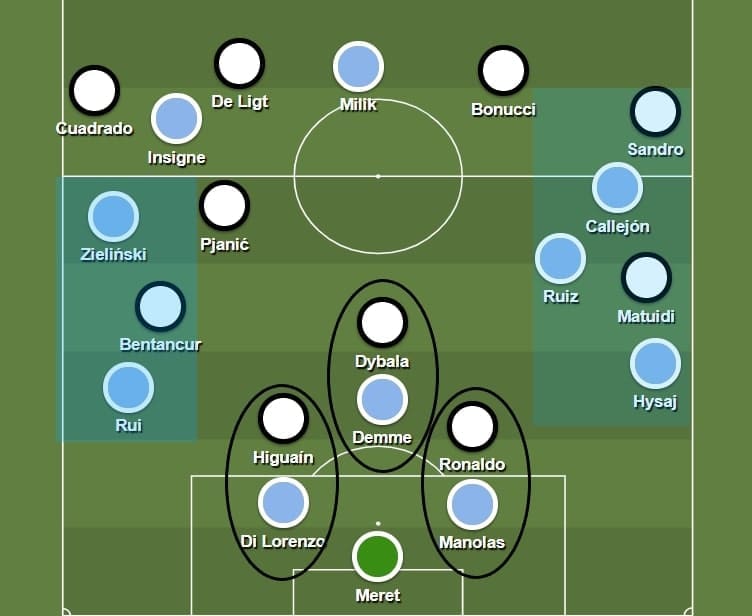
The below image is an example, where the ball was moved to the right-back (Hysaj) and Cristiano Ronaldo was behind him. As a result, Matuidi was being overloaded in a 1 v 2, and it was too difficult to defend both. In this case, Ruiz ran behind the Frenchman to receive the ball behind the press.
Since the pressure might be confronted directly, sometimes the full-backs could not make a ground pass, instead, a chipped ball or a lofted pass also helped them to progress the attack.
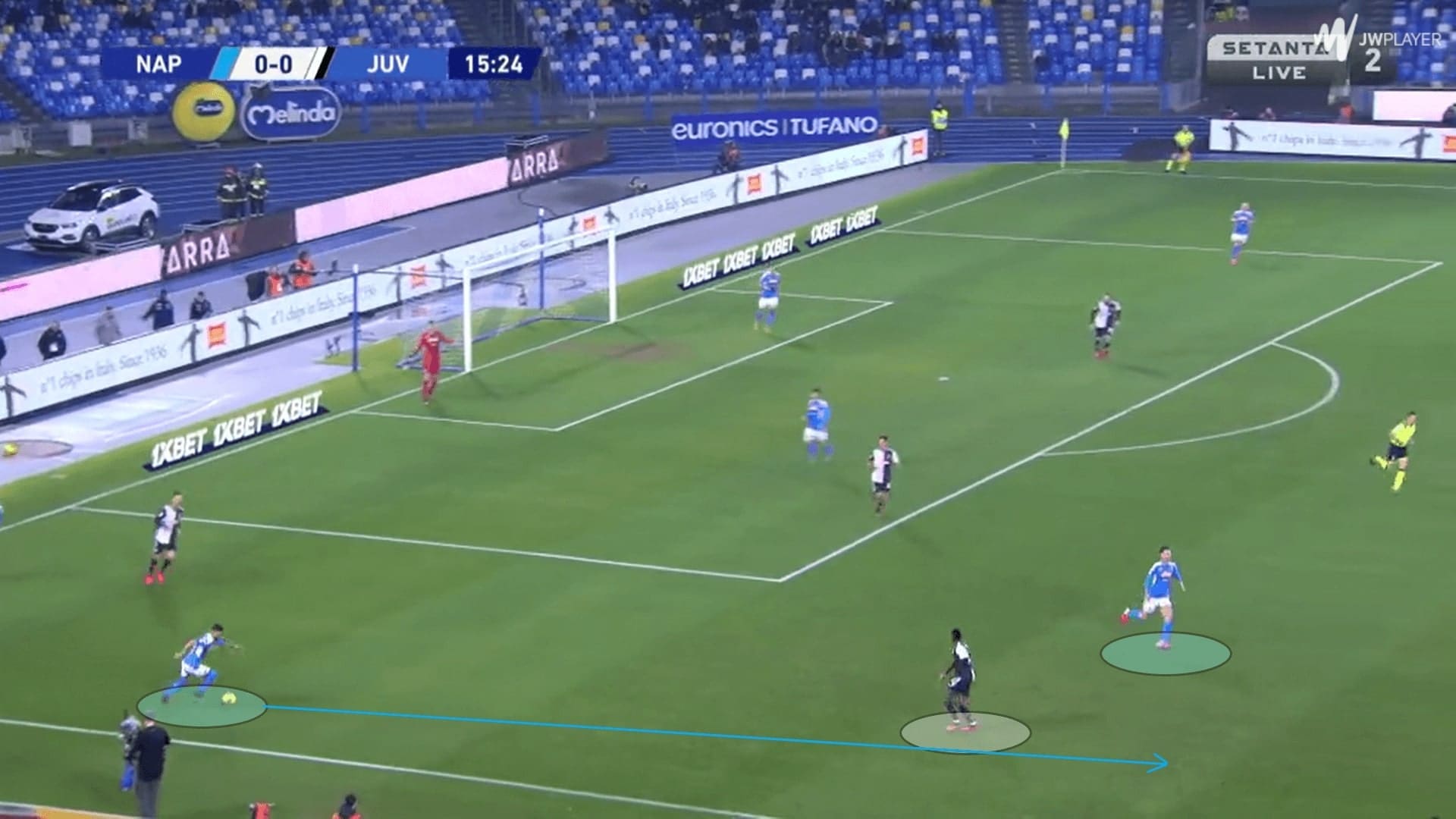
How about playing against a back three? We saw similar situations when Napoli played against Antonio Conte’s Inter Milan side. Again, as framed by the rectangle, the 1-2-1 shape of Napoli also created the pressing triangle of the opposition. Both Inter wing-backs, Victor Moses and Cristiano Biraghi stayed deeper, so the task of engaging the full-backs fell to the wide midfielders.
The wide overload still existed, taking the scenario on the left. The supporting concept was used to create options for Rui. Meanwhile, Inter tried to put Moses on Zieliński when Stefano Sensi moved to the Napoli left-back. However, the right centre-back had to take care of Eljif Elmas in this case, and the positioning of Milan Škriniar was too far from his target. Napoli still had room to progress their attack down the flanks.
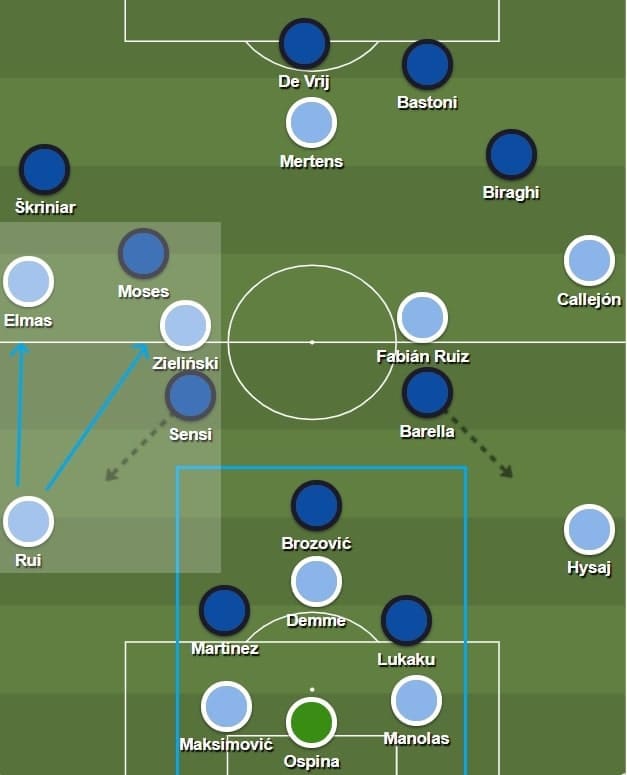
The below image is an example from the opposite flank. Compared to Rui, the right-back would position himself in the half-spaces as Callejón occupied the wide corridor always. This allowed the receiver to generate a better angle for his next move.
This was the positioning of Hysaj in this image. Since the Inter pressing triangle matched the Napoli 2-1 shape, and Callejón pinned the wing-back initially, Hysaj was free to receive the ball.
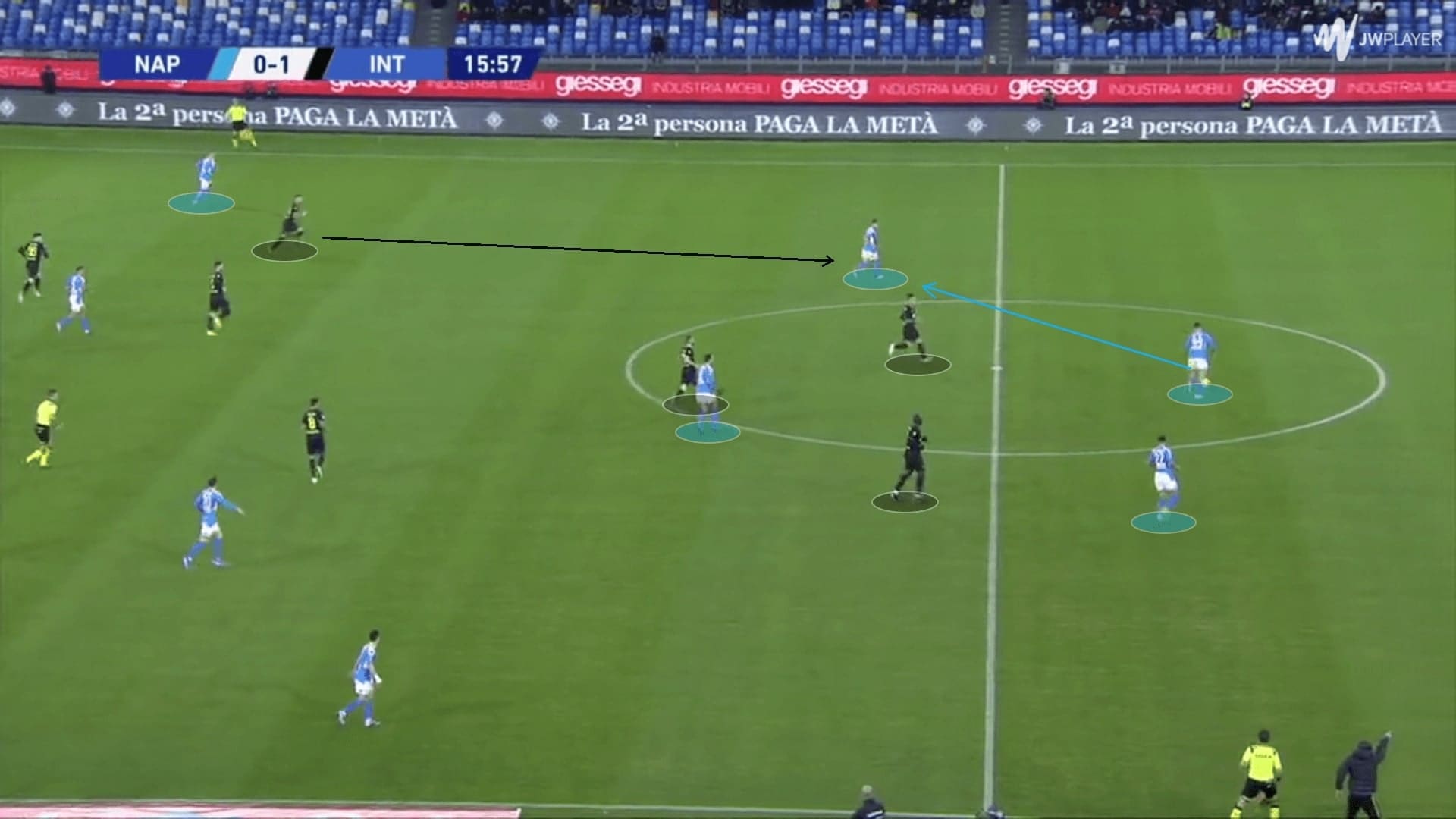
Decoy and escape
Another important element of Napoli’s build-up was the decoy player and switch of plays. With Rui, who is comfortable on the ball, the team is more unpredictable in the build-up. When the ball was moved to the Portuguese left-back, instead of finding the supporting players as explained, he also had the vision and ability to switch the ball to the opposite flank.
The quality of this strategy was further boosted by Rui’s decoy touches. The left-back liked to take an extra touch on the ball when the marker was far from him. The benefits of this decoy touch were two-fold. First, almost all opposition players would turn their sight to Rui and the ball, getting closer. Second, this touch created a better angle for Rui to exercise his switch of play or the next pass.
In this image, you could see all Juventus players turned their head to Rui because of his touch. However, Rui had already recognized the open space on the right, finding Hysaj.
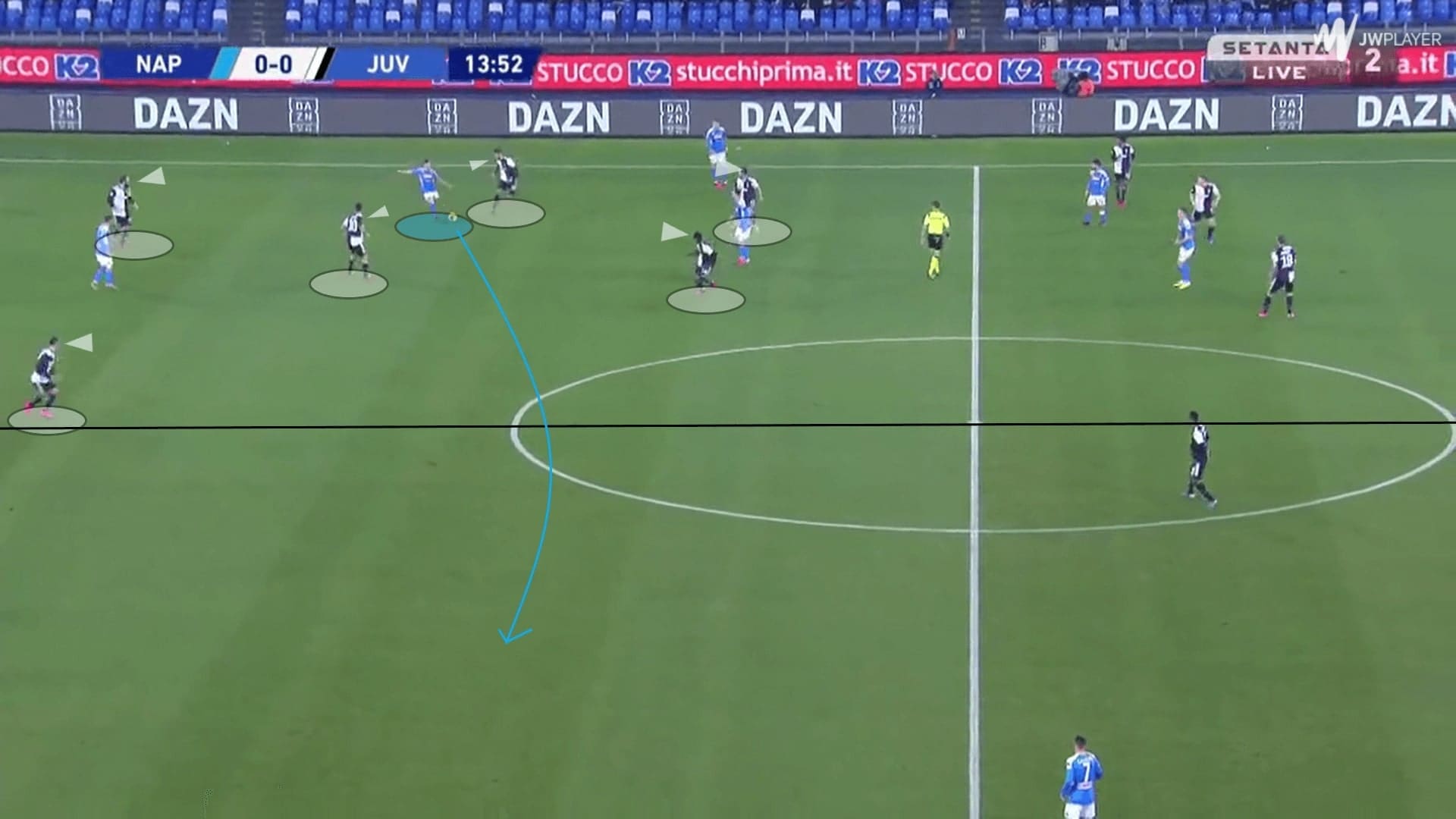
The right-back combined with the right-winger, usually Callejón. Napoli would have total domination on the right after they escaped on the ball side. The right-back could provide an underlapping run, temporarily creating a 2 v 1 for the opposing left-back.
Callejón had a lot of options apart from releasing the right-back. As a more conventional winger, he also crossed early to find Milik or even Insigne at the far post. Potentially it could be a 2 v 2 at the centre as the right-back was lured higher before the switch of play.
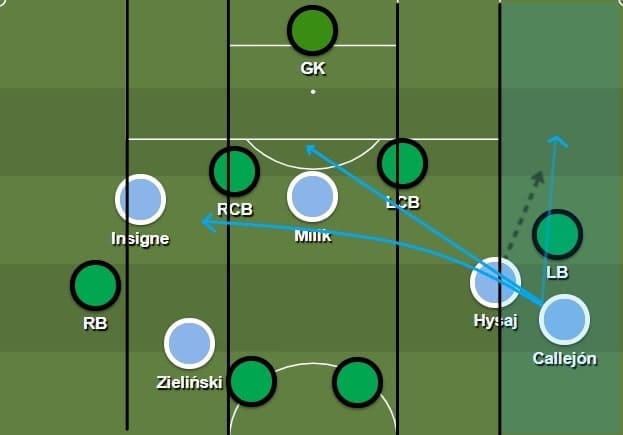
There are variations when Demme or Lobotka played as the defensive midfielder. The switch play was not necessary to be a one-time pass, it could reach the midfielders first. The below scenario mixed different concepts: finding the keeper, reaching the full-backs and the dropping midfielder. Ospina lofted the ball over Romelu Lukaku to find Rui. The positioning of the pressing two could be easily manipulated by the wide and deep positioning of the centre-backs, which created more room for the full-backs behind the forwards.
The pressing approach of Inter was imperfect in this situation, as Nicolò Barella was far away from his midfield partners. Brozović was thus left in a 1 v 2 against Demme and Ruiz.
Therefore, Napoli easily escaped the press through Demme, who then found Di Lorenzo. Biraghi was kept deep because of Callejón’s high positioning. Meanwhile, when the ball moved to the weak side, Barella was isolated in a 1 v 2, and a simple one-two allowed Napoli to bypass the Italian.
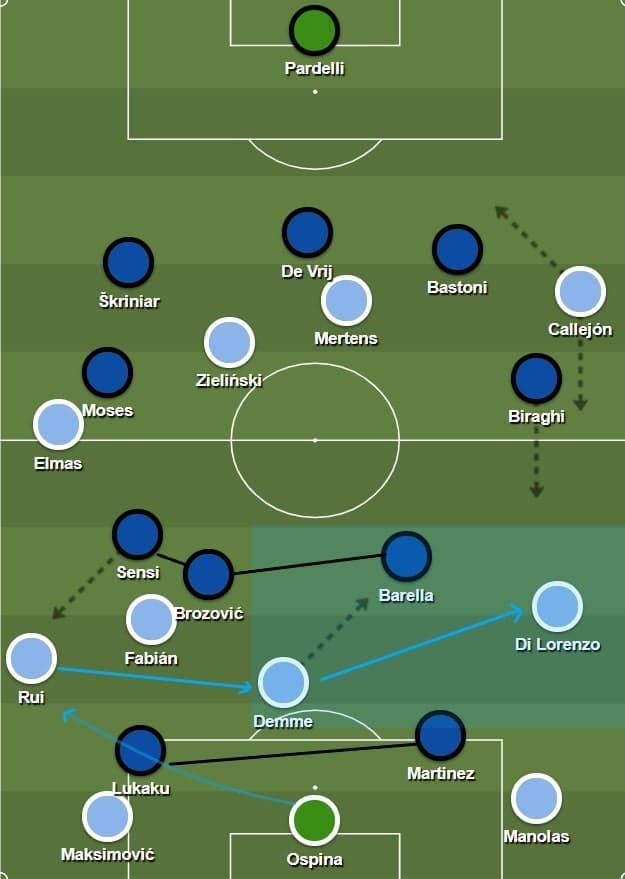
The wingers
As explained above, the wingers were tasked with supporting the full-back in the build-up. We are going to further explain the variations on both flanks. On the left, usually, it was a right-footed winger, mainly Insigne and Elmas. When the left-winger dropped, they should be able to perform a third man play to find the midfielder.
For example, Hysaj found Insigne in the below image. A marker was expected to appear behind the skipper as no team would want Insigne being left unmarked. Insigne did not have the space to turn and run with the ball, so he played the ball to the third man of this move, who was Zieliński.
Of course, not every move could develop into a third man play as the body orientation of the dropping player was vital. Sometimes it was too risky and difficult for an inside pass, but Insigne could be relied upon to play his back pass safely in such situations.
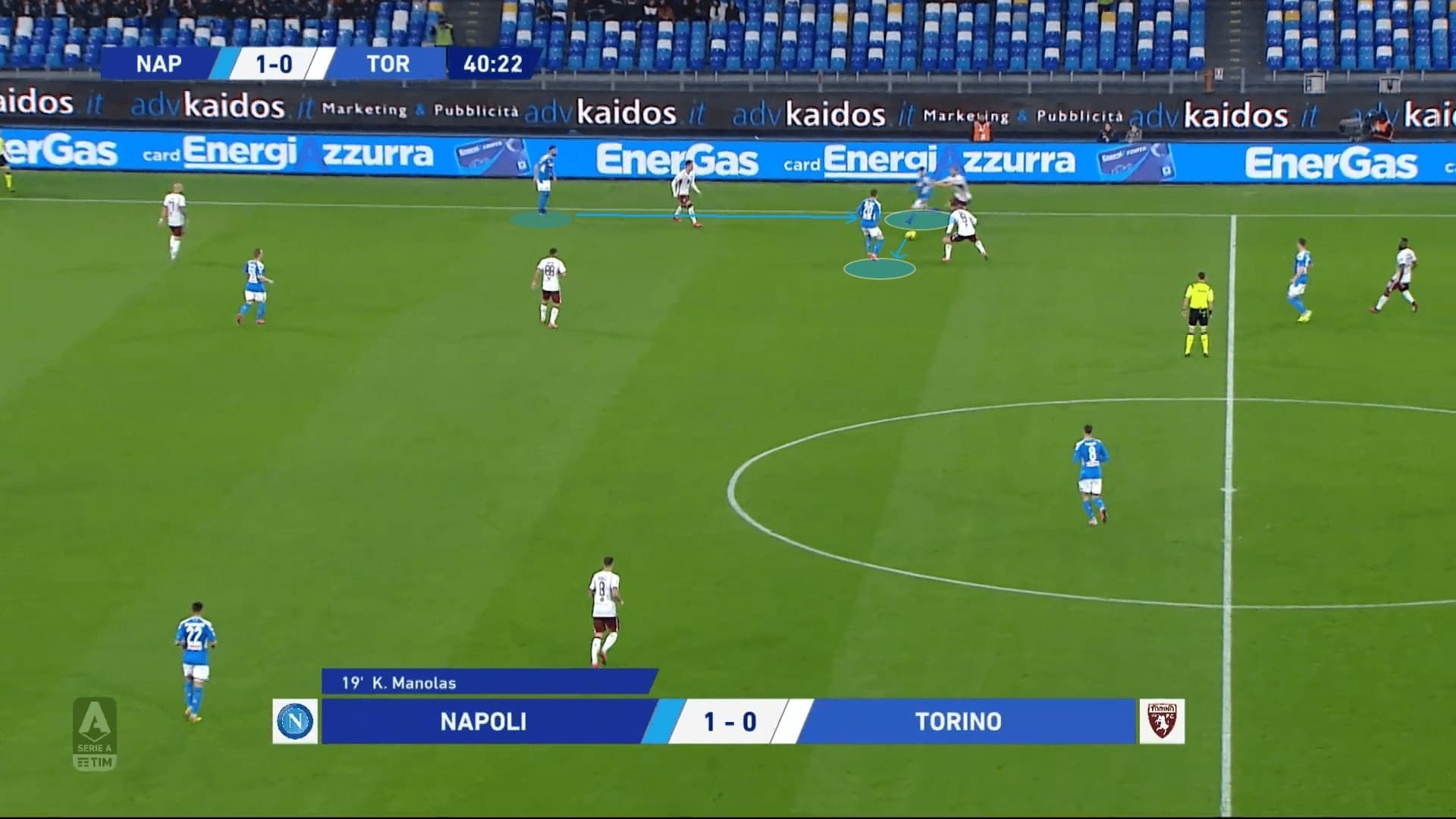
On the right, the situation was slightly different as Callejón is a more conventional winger. The former Real Madrid man likes to run behind the defensive line rather than dropping deep. Also, the third man play above was difficult to replicate as he is a right-footed winger on the right, limited by the body orientations when he dropped.
Therefore, the right-back would be trying to find the midfielders on these occasions. As you could see, Allan provided support to Hysaj as Callejón was running behind the defenders.
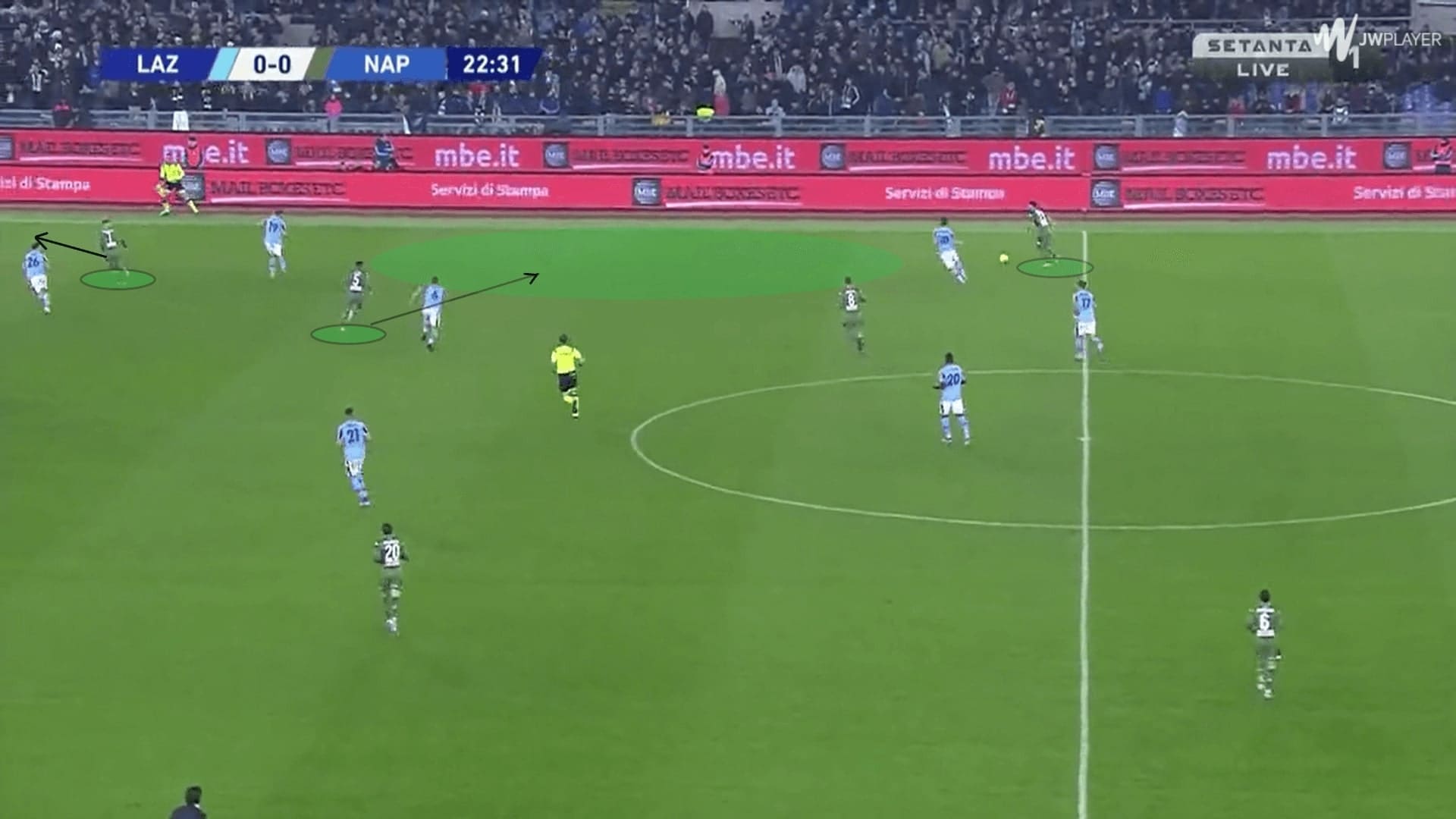
Now, things could be different since the arrival of Mateo Politano. The 26-year-old is a left-footed winger on the right. He should have provided the same service as Insigne did on the left flank.
However, currently this is a weakness of the team as Politano is not used to receiving the ball in such situations. He is uncomfortable to receive the ball from the right-back in a dropping move, and hence prone to making an error. When there is pressure on him from behind, his pass is less accurate, as we’ve seen in the Leece and Torino games.
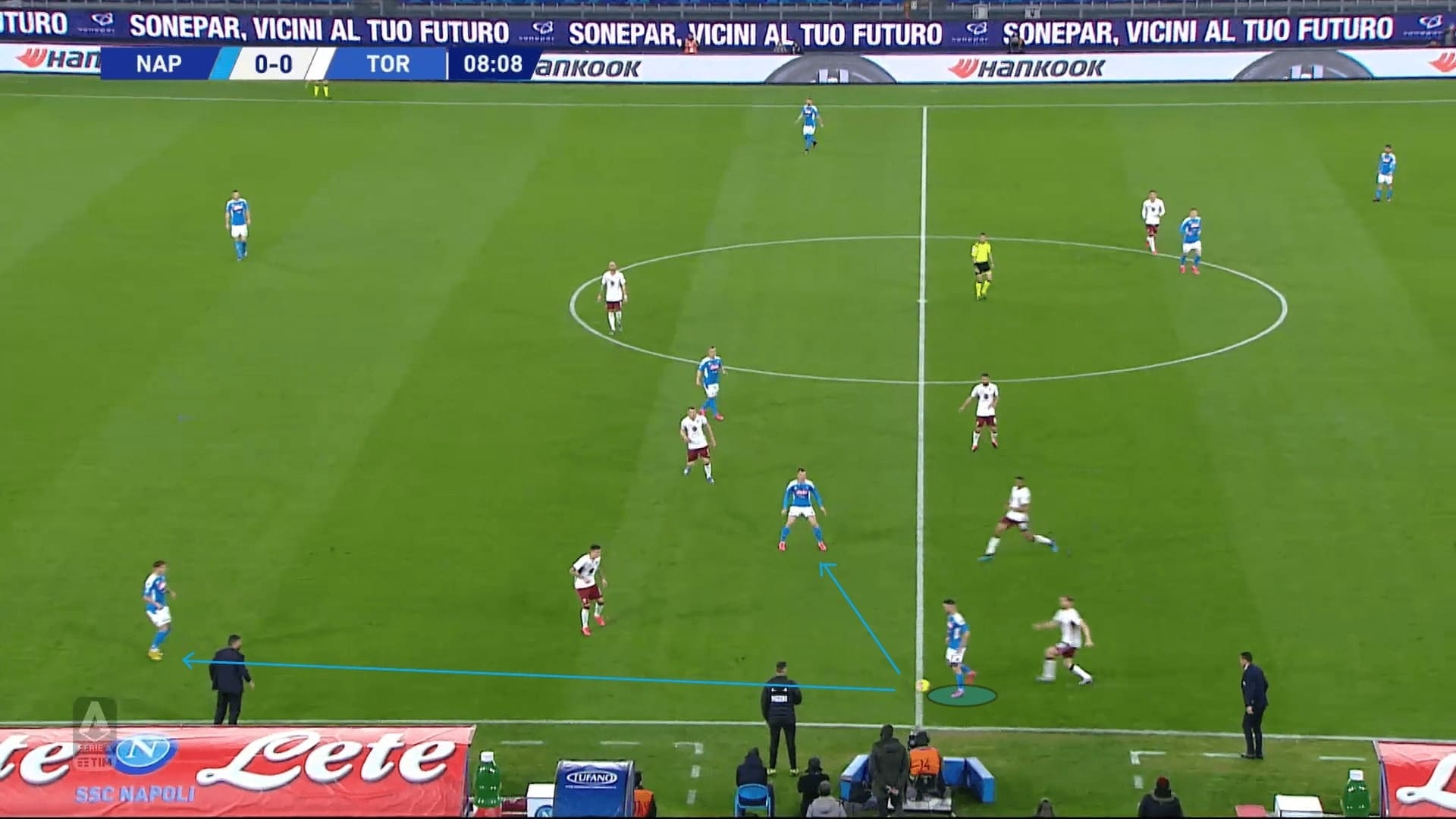
Milik as a passing outlet
In this last section of our scout report, we wanted to point out the usage of Milik in the build-up. Because of his physical superiority, the Polish international offers something different from Dries Mertens. Mertens tends to run behind the defenders while Milik could be an important player when Napoli played long. Of all Serie A strikers this season, only Andreas Cornelius’ 55.93% aerial success rate is higher than Milik’s 54.55%.
When most Napoli players stayed in their own half, they also drew the pressure in their half. This also generated space for the destination of the long balls, as highlighted in the below image.
The benefit of playing Hysaj was his ability to use both feet. Despite Biraghi pressing from his right, Hysaj was still able to play the long ball forward. Inter midfielders were absent in this area as they were man-marking the Napoli midfield trio too tightly. Meanwhile, Insigne had the freedom to run behind the defenders or come close to Milik, depending on where the ball was being passed. It suddenly created a 2 v 2 or 3 v 3 thanks to Milik’s aerial presence.
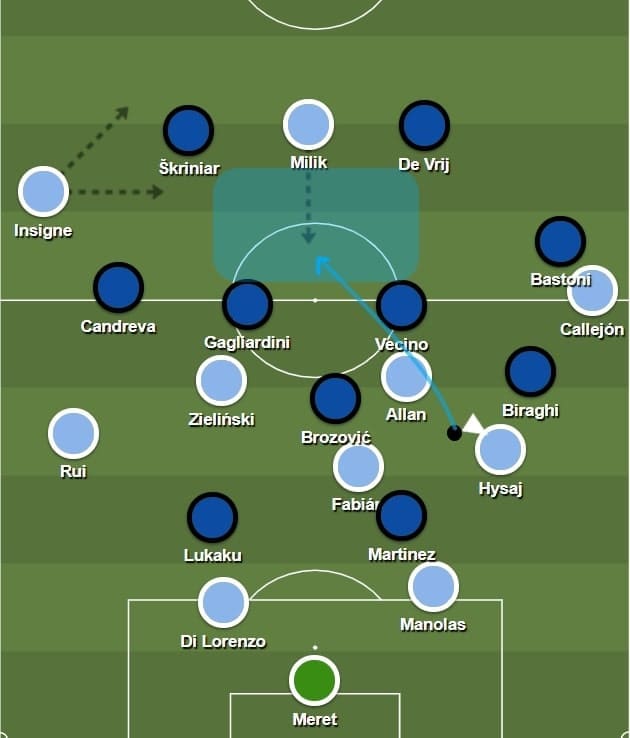
Apart from the long balls, Milik is also useful when providing himself as a “+1” advantage on the ball side. He is clever to exploit spaces, becoming the passing outlet at the centre. Therefore, when Napoli progressed the ball on the flanks, they were not trapped if they found Milik.
In this image, you can see six players on the right. Milik cleverly freed himself by dropping behind the Inter midfield, becoming the additional one on the ball side. This allowed Allan to find him and Napoli escaped the pressure.
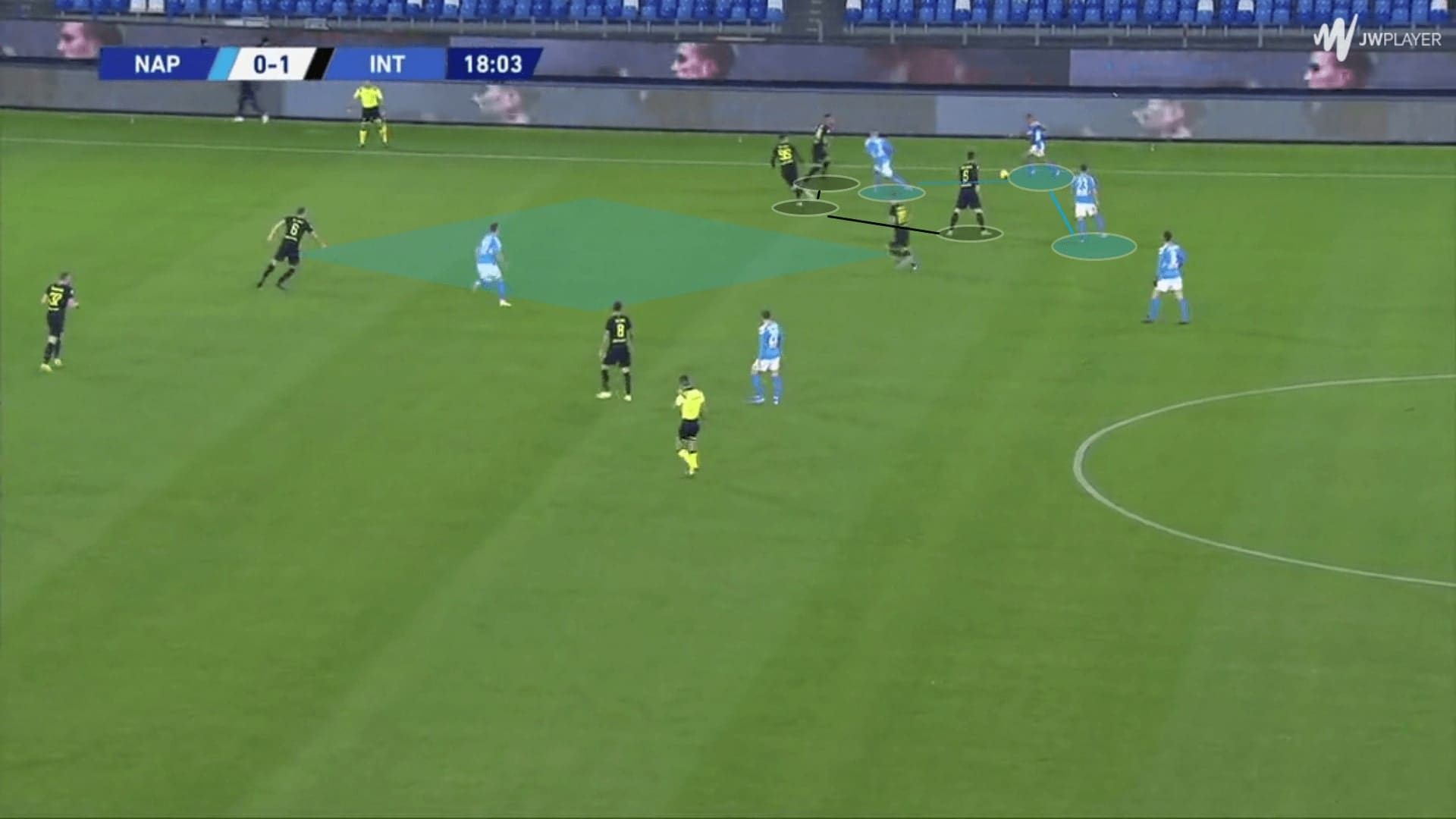
Conclusion
Napoli recovered well after their slow start under Gattuso. They won seven of their last nine matches, beating the top three in the league in Juventus, Inter and Lazio along the way. They have shown the capability to play out from the back under pressure, which is not easy.
A key part of the whole system is their full-backs, as both Rui and the right-back were always the free players. Under Gattuso’s tactics, Rui is a key individual to progress the ball, and he is gradually developing into a key player of the team. Of course, we can expect more to come from Napoli in the future.

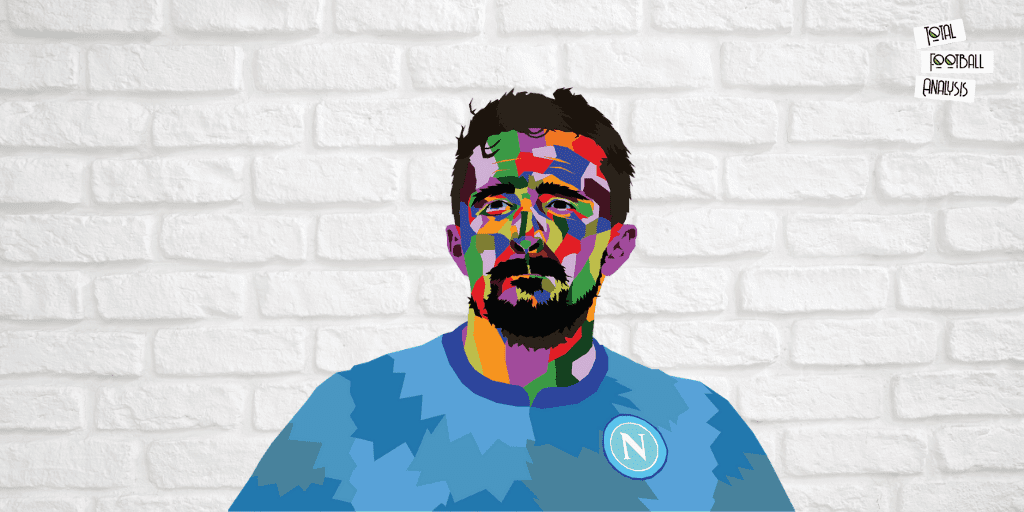


Comments